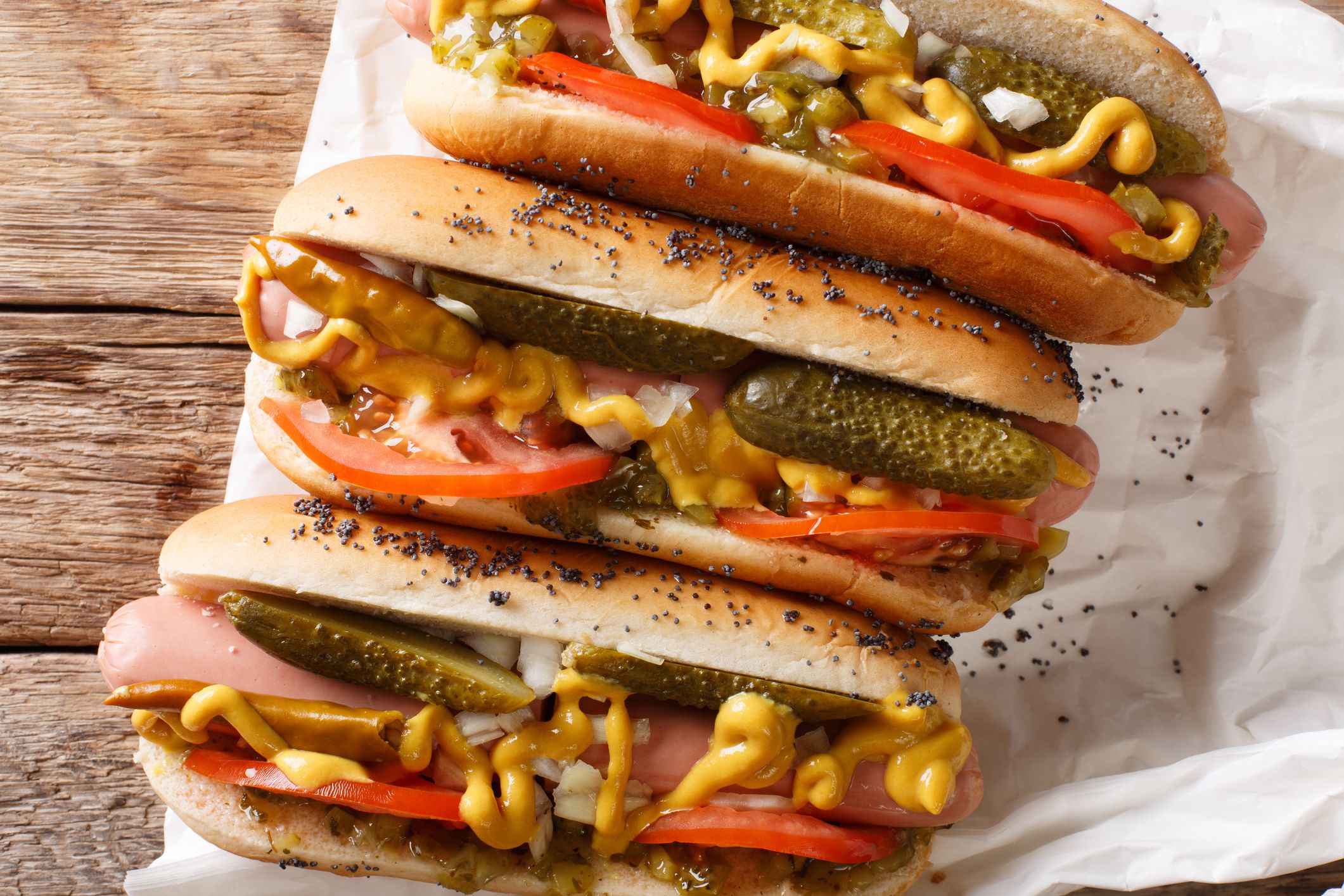If you’re looking for cheap and easy, few foods fit the bill as well as the hot dog. Yet despite the hot dog’s affordability and popularity, it’s also undeniably a weird food.
How hot dogs got so hot
If you’re a hot dog lover, thank the German immigrants who came to the US in huge waves in the 19th century, porting over their love of sausages and beer gardens.
“It originated as a home food among Germans, and then went to the street, where it became commodified as a cheap product to be eaten on the run by immigrants,” says Bruce Kraig, a historian who has written two books about the culinary and cultural history of the hot dog. “It’s kind of poor folks’ food.”
- Early vendors were mostly poor immigrants selling the bun-and-wiener combo for a nickel a pop, and hot dogs were such a hit because they were relatively cheap to both buy and sell.
- As hot dog carts popped up coast to coast in the early 20th century, a few lucky enterprising souls struck it rich from their hot dog business — like Nathan Handwerker, founder of the Nathan’s Famous hot dog chain that crowds flock to on Coney Island to this day.
. . .Thanks to its association with leisure — specifically, being out and about in warm weather — hot dogs also became indelibly associated with the summertime.
- Today, almost 40 percent of the billions of hot dogs consumed in the US every year are eaten between Memorial Day and Labor Day.
- (Hot dog sales at baseball games don’t make up as much of total sales as one might think: only about 20 million per year, according to the National Hot Dog and Sausage Council.)
For the, ahem, big dogs of the industry — billion-dollar companies often owned by even larger food conglomerates — business has been pretty good the last few years.
- In 2021 especially, profit margins in the meat processing industry jumped as companies raised prices.
- Tyson Foods, which owns the popular Ball Park Franks hot dog brand, made a whopping $1.46 billionprofit in just their prepared foods category (which includes deli meat and hot dogs) in 2021, compared to $743 million in 2020 and $746 million in 2022.
In popular culture, hot dogs often communicate some kind of absurdity. (See: the viral I Think You Should Leave sketch.)
A recent TikTok trend asked people what they would yell if they were a hot dog hawker at a baseball game; since 2020 there’s been an uptick in people who aren’t from Washington, DC, calling hot dogs “glizzies” all over social media.
There’s also a long-running online obsession with the dirt cheap Costco hot dogs, a dependable go-to in an economy that feels more topsy turvy every day — you can even buy a Costco hot dog memecoin. . .
Continue reading >> https://www.vox.com/the-highlight/358190/americas-obsession-with-hot-dogs-explained
-----------------------------------------------------------------------------------------------------------------------------
Americans purchase an estimated 9 billion hot dogs at retail stores each year. From sporting events to late-night eateries to street vendor carts in New York City, hot dogs are widespread in the US. Although the modern-day American hot dog differs from German-style sausages such as Currywurst or Bratwurst, its origins can be at least partially traced to Germany.
Europeans have produced sausages for centuries; Homer’s Odyssey traces the consumption of sausage back to the 9th Century B.C. and there is evidence that sausages were prevalent in the Holy Roman Empire.
- Although sausages were widespread in Europe, both Germans and Austrians take credit for the origin of the so-called Frankfurter or Wiener – the predecessors of the American hot dog.
----------------------------------------------------------------------------------------------------------------------------
The Best Hot Dog in Every State
The dog days are far from over.By David Landsel
Published on October 19, 2020
- And then there are the dogs of Switzerland, and train stations in Germany.
- There's the frikandel of the Netherlands—deep-frying a hot dog wasn't invented by us, either—
- and the street dogs of Copenhagen, where you'll find more carts than in parts of Manhattan.
- How did the hot dog become one of America's favorite foods? Just look back across the Atlantic.
- We have rippers in New Jersey, sizzling from their oil baths and topped with spicy relish.
- We have bacon-wrapped Sonoran dogs in Tucson,
- Coney dogs dripping sauce that rich with suet and beef heart in Detroit,
- dogs topped with pimiento cheese in the Carolinas,
- and slaw dogs in West Virginia.


.jfif)
.jfif)






:max_bytes(150000):strip_icc()/best-hot-dogs-in-every-state-FT-BLOG1020-6e025500cefb480ba986b163792ec790.jpg)
:max_bytes(150000):strip_icc():format(webp)/best-hot-dogs-in-america-el-guero-canelo-FT-BLOG1020-570b0ff38d524c10929502d2d2a64cc1.jpg)
No comments:
Post a Comment